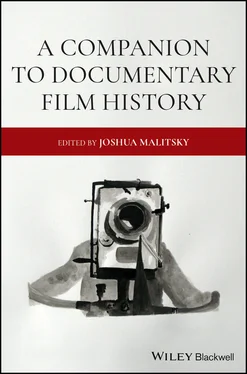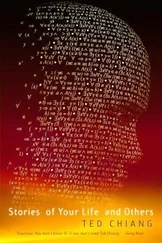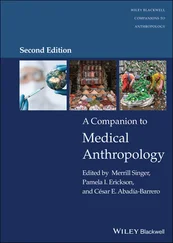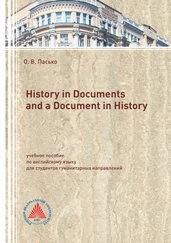The critical consciousness that questions conventional thinking, uncompromising anti‐authoritarianism, and the exhaustive mentality that objectifies both the object and the subject without being entrapped with sentimental emotions—these were the best things I learned from Mr. Hanada. And his dynamic and flexible method that unifies the essential opponents without dissolving their conflicts had been served as a guide for my own practice for a long time. (Matsumoto 1978: appendix 10) 9
As this brief statement makes clear, it is no exaggeration to say that Hanada's conceptualization of sur‐documentary was instrumental or even indispensable for the radical transformation of both documentary and experimental film practices in Japan from the mid‐1950s onward. But since the adaptation of his theory into filmmaking has been studied elsewhere, I would like to conclude my chapter instead by foregrounding the potential of Hanada's thinking for a reconfiguration of the history of film theory in general.
In his early writing, Hanada developed a concept called “elliptical imagination” ( daen gensō ). This concept aimed to illustrate the particular mentality of those who lived through the transitional period from the Middle Ages to the Renaissance, the mentality in which various sets of two opposing elements – poetry and mathematics, intuition and logic, vulgarity and piety, humanism and anti‐humanism, and the pre‐modern and the modern – coexisted without minimizing or unifying their mutual conflicts. As a geometrical figure generated on the condition that the sums of the distances of each point in its periphery from the two focal points are equal, the ellipse has been interpreted by many as illustrating Hanada's formulation of dialectics, given its constant negation of the harmonious unity with a single center (a circle or synthesis) and inherent possibility for eternal transfiguration (Hanada 1977 [1946]). However, it should be pointed out that he applied this concept to the very constitution of the modern world as such, which, as Stuart Hall and others remind us, has always cultivated itself on the two opposing but always correlational focal points: The West and the Rest, or the subject and the object of the Enlightenment (Hall 1996: 184–227). In this geopolitical configuration, it is impossible to draw a perfect circle by focusing only on either of those focal points, or, as Hanada maintained in one of his essays, “what is ‘Japanese’ is at the same time ‘Western’” (Hanada 1977 [1949a]: 37). This makes it clear that the complexity of diverse instances of modernity can be explained fully neither by a teleological narrative of the so‐called “modernization theory” that always leads to the alleged superiority of the Western model of modernity, nor by the discourse of “alternative modernities” that tends to put aside the fact that what we consider to be “local” or “indigenous” in the experience of modernity are not absolute but only conditional or relative, made visible through the internalization of the Western perspective (Lamarre 2004: 1–35).
What I have aimed to illustrate in this chapter is that such an elliptical relationship also formed around the local reception of the Griersonian conception of documentary in Japan. There is no such thing as a purely “Japanese” film theory because the critical debates on cinema in Japan have always developed in constant dialogues with ideas or concepts imported from abroad, revolving around two correlational poles of the local and the global. With this remark, however, I do not mean that the creation of theory always originates in the West, and accordingly, that any examples from the non‐West must be treated as derivative copies or secondary arrangements of the original. Indeed, I contend that the problem with the preexisting study of film theory has been its egocentric attempt to draw a perfect circle of influence by locating the West as its single center. Or, as Masha Salazkina has recently suggested, we now must critically reconsider the fact that the highly exclusive Eurocentric selection of canonical texts in film studies as an academic discipline undeniably follow and duplicate “the imperial hierarchy of the modern world system” (Salazkina 2015: 325–349). It is here that one could understand the utility of Hanada's theoretical intervention: not only does it demonstrate the maturation of local debates on documentary as a distinct form of film practice, it also encourages us to discover hitherto neglected constellations of global thought which have yet to be documented in the general history of theories of cinema and its related cultural phenomena.
1 Atsugi, T. (1940). Story‐film no yakugo ni tsuite [On the Translation of the Story‐Film]. Bunka eiga kenkyū 3 (4): 118–119.
2 Furuhata, Y. (2013). Cinema of Actuality: Japanese Avant‐Garde Filmmaking in the Season of Image Politics. Durham, NC: Duke University Press.
3 Grierson, J. (1971). Grierson on Documentary, revised edition (ed. F. Hardy). New York and Washington: Praeger Publishers.
4 Grierson, J. (1998 [1927‐33]). Untitled lecture on documentary. In: The Documentary Film Movement: An Anthology (ed. I. Aitken), 76–77. Edinburgh: Edinburgh University Press.
5 Grieveson, L. (2011). The Cinema and the (Common) Wealth of Nations. In: Empire and Film (eds. L. Grieveson and C. MacCabe), 73–114. London: BFI.
6 Hall, S. (1996). The West and the Rest: Discourse and Power. In: Modernity: An Introduction to Modern Societies (eds. S. Hall, D. Held, D. Hubert, et al.), 184–227. Malden, MA: Blackwell.
7 Hanada, K. (1950). Jo [Introduction]. In: Eiga geijutsu no keishiki, revised edition, vol. 1 (ed. T. Imamura). Tokyo: Onkodō.
8 Hanada, K. (1977 [1946]). Fukkōki no seishin [The Renaissance Spirit]. In: Hanada Kiyoteru zenshū, vol. 2, 223–419. Tokyo: Kōdansha.
9 Hanada, K. (1977 [1949a]). Kamen no hyōjō [Expression of the Mask]. In: Hanada Kiyoteru zenshū, vol. 4, 30–43. Tokyo: Kōdansha.
10 Hanada, K. (1977 [1949b]). Yūmoresuku [Humoresque]. In: Hanada Kiyoteru zenshū, vol. 4, 13–22. Tokyo: Kōdansha.
11 Hanada, K. (1977 [1951]). Kikai to bara [The Machine and Roses]. In: Hanada Kiyoteru zenshū, vol. 4, 163–172. Tokyo: Kōdansha.
12 Hanada, K. (1977 [1953]). 20‐nendai no ‘avangyarudo [The Avant‐Garde in the 1920s]. In: Hanada Kiyoteru zenshū, vol. 4, 213–222. Tokyo: Kōdansha.
13 Hanada, K. (1977 [1954a]). Warai neko [The Cheshire Cat]. In: Hanada Kiyoteru zenshū, vol. 4, 232–246. Tokyo: Kōdansha.
14 Hanada, K. (1978 [1954b]). Tōsō to tōitsu [Struggle and Integration]. In: Hanada Kiyoteru zenshū, vol. 6, 109–111. Tokyo: Kōdansha.
15 Hanada, K. (1978 [1956]). Eiga hihyō ni tsuite [On Film Criticism]. In: Hanada Kiyoteru zenshū, vol. 7, 202–215. Tokyo: Kōdansha.
16 Hanada, K. (1978 [1957]). Gūzen no mondai [An Issue of Contingency]. In: Hanada Kiyoteru zenshū, vol. 6, 359–382. Tokyo: Kōdansha.
17 Hanada, K. (1978 [1958a]). Shuru‐dokyumentarizumu ni kansuru ichi kōsatsu [A Study of Sur‐Documentarism]. In: Hanada Kiyoteru zenshū, vol. 7, 156–160. Tokyo: Kōdansha.
18 Hanada, K. (1978 [1958b). Shukumei wo megutte [On He Who Must Die]. In: Hanada Kiyoteru zenshū, vol. 7, 161–166. Kōdansha.
19 Hanada, K. (1978 [1958c). Eigateki shikō [Cinematic Thinking]. In: Hanada Kiyoteru zenshū, vol. 7, 145–313. Tokyo: Kōdansha.
20 Hanada, K., Sasaki, K., Abe, K. et al. (1957). Eiga hihyō no saikentō [Reconsidering Film Criticism]. Kinema junpō 172: 41.
21 Harootunian, H. (2000). Overcome by Modernity: History, Culture, and Community in Interwar Japan. Princeton, NJ: Princeton University Press.
22 Hegel, G.W.F. (1991 [1821]). Hegel: Elements of the Philosophy of Right (trans. H.B. Nisbet) (ed. A.W. Wood). Cambridge: Cambridge University Press.
Читать дальше












